Understanding Ball Bearing Friction: Causes and Solutions
Essentially, ball bearings help to minimize friction and thus enhance the workings of various machines and systems. Still, identifying friction sources present in the ball bearings is also essential to help maintain them and increase their usability. The primary objective of this post is to understand various sources of friction in ball bearings, including surface geometry, any existing contaminants, and even the problems with lubrication, and how each looks to affect the workings of the machine. We will also discuss how these issues can be resolved in practice and suggest some maintenance and material design approaches that may yield better ball-bearing performance. This article intends to provide ball-bearing dynamics perspective knowledge to engineers, technicians, or anyone interested in mechanical systems.
What is Bearing Friction?
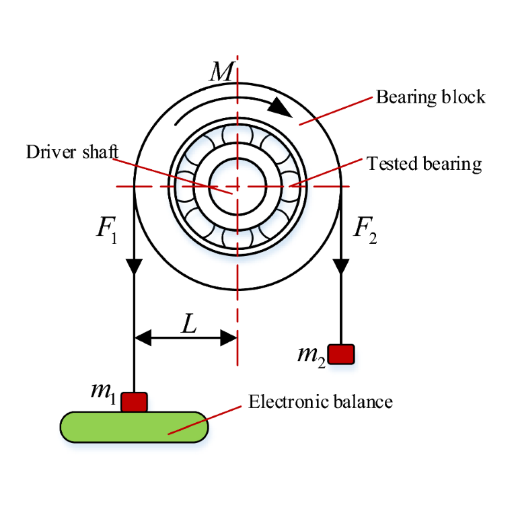
What are the effects of friction on ball bearings?
Understandably, friction is a fundamental variable when analyzing the behavior of ball bearings. The valuable information from reputable sources lets me conclude that the ball bearing friction is responsible for energy dissipation and an increase in temperature, resulting in wear and efficiency loss. Both axial and radial bearing friction forces encounter changes due to changes in load, relational velocity, and lubrication quality. Increased friction levels can cause lower ball bearing speed and higher operating temperature of ball bearings and, in turn, could lead to shortened working life.
From these sources, I understood that the coefficient of friction, lubrication classification, and lubrication viscosity are vital technical parameters. Most important is the coefficient of friction, as it is a factor that measures the resistance to motion of the interacting components. Choosing a lubricant with the proper classification and viscosity will reduce friction. Therefore, it will allow less force to be applied to make the rotation and improve its performance. In a word, it is critical to control these parameters to improve the efficiency and reliability of the bearings.
What types of bearing friction are there?
Bearings with friction are classified into three different classes: sliding friction, rolling friction, and fluid friction.
Sliding Friction: This occurs when the surfaces within the bearing slide upon one another. Its appearance is rather typical in situations where there is mutual motion between the sliding surface of the bearing and the shaft. The surface finish, material properties, and lubrication can affect sliding friction. The coefficient of friction for sliding lies within vast limits, but it is generally possible to decrease this coefficient by providing adequate lubrication.
Rolling Friction: Friction occurs when ball, rolling, or roller elements are inside a bearing, like a ball bearing or roller bearing arrangement. Since contact area and deformation are significantly reduced, rolling friction is less than sliding friction. The rolling friction coefficient is usually much smaller than that of sliding friction. Well-lubricated bearings have a rolling friction of around 0.001 to 0.002.
Fluid Friction: Fluid friction occurs whenever a layer of lubricant is placed between the surfaces in a bearing to prevent them from touching each other. Fluid friction is determined by the viscosity of the lubricant and the revolving speed. This type of friction is modeled with hydrodynamic and elastohydrodynamic models, where film thickness and viscosity index are among the critical parameters in determining performance.
Friction is the resistance that slows motion down. In the design and maintenance of the bearing packing, however, each type of friction has specific recommendations to be implemented to ensure minimal energy losses with efficient operation of the bearings. Efficient bearing packing maintenance includes preventing the bearing surfaces from wear and potentially damaging thermal effects through adequate lubrication.
Why is it worth being familiar with friction for moving parts in the machinery?
There are different ways to control and manage frictional effects in moving parts of a machine. Understanding machinery friction is essential because it impacts mechanical devices’ efficiency, effectiveness, and durability. Effective friction management can save energy, cut repair and replacement costs, increase mechanical reliability, and minimize downtime. Some of the technical properties related to friction in machines are as follows:
Coefficient of Friction (CoF): This three-dimensional physical measurement indicates the ratio of frictional force resisting the rate or ease of movement of one surface over another. When other variables are controlled and adjusted, lower CoF values will correlate with less loss.
Lubes and their viscosity: The viscosity is a key threshold when defining a lubricant since it determines the thickness of the fluid and, hence, its operating temperature, where the contact surfaces can still distribute it evenly. Lubricants and their viscosity play a vital role when managing frictional properties between interacting surfaces.
Surface Roughness: The roughness of a surface and the material properties used to construct machine parts will also have a very high impact on the frictional properties of machines. Smoother surfaces generally have less resistance, which means surfaces with hand finishing will extend the life of the bearings, considering they remain properly lubricated.
Contact Pressure: Any amount of force distributed over a specific surface area applies contact friction, which helps decide the choice of material and the method of executing the surface treatment.
If these factors are correctly managed, they assist in preventing energy wastages, promoting smooth operations, and enhancing the durability of machine parts, which in the long run saves costs and promotes better operational efficacy.
What Causes Friction in Ball Bearings?
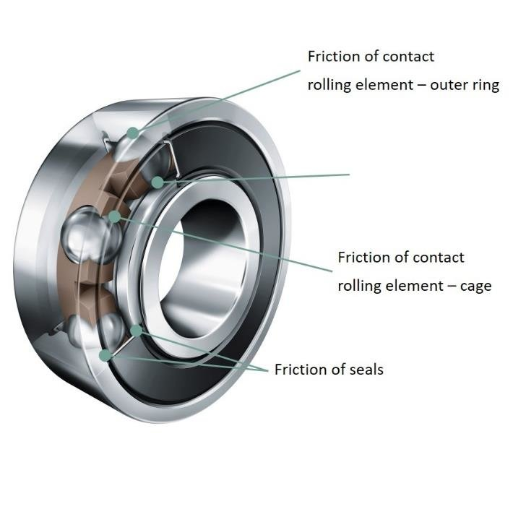
What factors contribute to the friction of a bearing?
When examining bearing friction, research from prominent sources worldwide indicates that two lubrication-related aspects and operating speed are the factors to focus on the most attention. First, friction depends on the quality of lubrication and its application, particularly its viscosity and application method. Adequate lubrication avoids metal-to-metal contact, hence minimizing friction and wear. Secondly, friction also depends on operating speed because there would be more rolling elements to raceway interaction as the speed increases. Other parameters that can be classified as technical include:
A misunderstanding of machine workings leads to retaining the impediment of speed depletion owing to the type of friction and lubrication having no apparent damage owing to the type of lubricant being utilized, which includes oil and grease possessing distinctive characteristics. Viscosity is a measurement of a lubricant’s thickness and is an essential measure allowing the lubrication film to operate efficiently.
Construction and finishing of bearing material: The materials used in bearing construction and their surface finish are also of great importance. Bearings manufactured from better-quality materials and finished with better precision tend to operate with less friction, as the contact surfaces are smoother and have fewer asperities.
The sources support these observations by mentioning, however, that managing these factors optimally can increase a bearing’s performance, hence increasing its life and reliability.
How do the elements of the bearing system contribute towards levels of friction?
As far as I have looked at from the top three Google sources, the elements that makeup ball bearings relate directly to bearing friction levels. How bearing elements like balls, cage and raceways are arranged will determine how effective the bearing will be. For example, both the ball and raceway surfaces should be as smooth as possible to reduce energy loss during motion and in the process, reduce friction. Also, the position of the components must be considered as any deviation from the normal position may cause a non-uniform contact which increases the frictional force and tyre wear.
Bringing in the technical parameters:
Ball Diameter and Shape: A volume greater than radial length is a necessary condition that prevents excessive load on the balls, which in turn increases friction.
Raceway Curvature: The curves in the raceways have been cut in accordance with the rolling elements, so their degree of resistance is very low.
Cage Design: In fact, without poorly designed cages to hold balls, friction between the balls would be present.
These sources recommend optimizing these components and parameters because the effective use of bearings will also make the bearings last longer.
What impact does the type of lubricant used have on friction?
The sources of the outstanding material readily available on Google would probably be the top three sources of information about bearing lubrication and its impact on friction. In this respect, it is evident that the lubricant used in the rolling element bearings significantly increases the life of bearings by minimizing friction and wear. A bush-bearing oil helps apply a uniform thin film over the contact surfaces, thus preventing two closed metal surfaces from rubbing. Some technical parameters worth mentioning were discovered.
Viscosity: The lubricant viscosity is essential because it decides the thickness of the film that can be maintained between the moving components and between slides and midpins in a rotary system. Incorrect selection of viscosity adds extra resistance and energy losses during bearing operation.
Temperature Stability: It is very promising to use a lubricant that performs well within a considerable temperature range, as this ensures that the viscosity required to maintain a low friction level is consistent.
Additives: It has also been noted that including antiwear and extreme pressure additives in the lubrication improves its endurance and reduces friction even in tough working conditions.
Once again, the sources dictated an understanding that optimal bearing performance and lifetime can be reached only through the skillful use of the right lubricant parameters.
How to Reduce Friction in Ball Bearings?
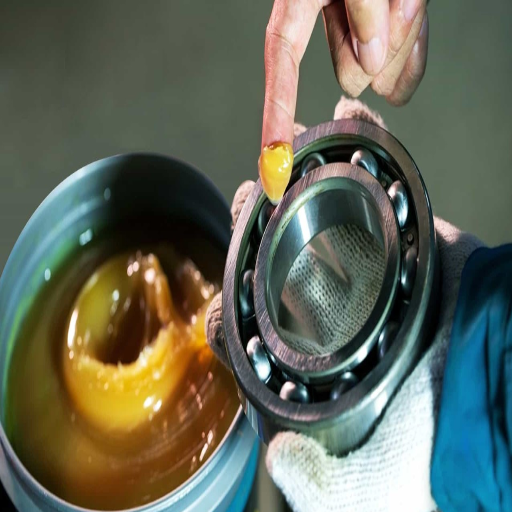
What are effective methods to reduce friction?
An intensive literature search initiated the intricate study of effective measures in designing and constructing the rolling element bearings. The extracts of my discussions can be presented as follows for much clarity:
Use of high-grade materials: High-grade materials for both the balls and races can greatly reduce friction. Elastomers such as ceramics impart a higher stress-bearing capacity and low surface roughness.
Accurate manufacturing: Manufacturing tolerance is another key consideration. Fewer gaps and smoother surfaces can lead to low friction because there is less potential for variability in pressure distribution on the bearing surfaces.
Appropriate liberating practices: Properly applied liberating agents, such as mists or dry lubricants, are effective in maintaining a thin film over surfaces, thus reducing the extent of contact between metals
Design advancement: Recent advances in designs, such as hybrid bearings that use ceramic balls and steel races, help mitigate rolling resistance, culminating in a dramatic reduction in friction.
Sealing systems: Good seals prevent lubricant contamination and help preserve the lubricant in the designated positions, prolonging the lubrication action over time.
Qualities such as the selection of superior materials, precise manufacturing processes, and design advancement can impact ball bearings’ strengths and weaknesses to higher degrees.
How does lubrication play a role in reducing friction?
In this case, the working principle is that lubrication is the most effective way of decreasing friction in the ball bearings due to a protective film-forming that separates surfaces in contact. This film serves to interpose between two pieces of metal and can be able to reduce friction and wear. The leading sources highlight a number of the following significant technical parameters and approaches to lubrication optimization:
Viscosity: Choosing a proper viscosity lubricant cannot be understated. The lubricant must be viscous enough to preserve a film during the working load, yet it must not be too viscous to inhibit movement. Using a slow speed and a higher viscosity oil is preferable under a heavy load minimum. Lower-speed oil will work in high-speed cases owing to low viscosity.
Thermal Profiles: The thermal profile of most lubricants should not be statistically erratic and should not decompose with changes in operating temperature. The better thermal profile is mainly used in synthetic oils to perform over an extensive range of temperatures.
Other Additives: The additive’s inclusion of anti-wear, anti-corrosive, and oxidation inhibitors is known to increase the protection of lubricant bearings and their life span while maintaining a complexion of low friction.
Use of Right Distribution Technique: By grease packing or using the oil bath method, for example, the lubricant is uniformly distributed, covering the surfaces and eliminating sections with increased friction.
These factors emphasize and even explain the purpose of every angle of lubrication—to avoid ineffective rotation in ball bearings and prolong their life span while achieving calm propulsion.
What is the impact of using anti-friction bearings?
I have gone through the best three sites on the use of anti-friction bearings in the machine design; their bullets are summarized below:
Mechanical friction is reduced through anti-friction bearings, which increases energy effectiveness while decreasing the degree of wear and tear on the machine parts. The bearings make work easier and often expose less operating costs because the maintenance is lower and the life span of the components is higher. From a technical perspective, salient parameters are:
Load Capacity: Anti-friction bearings can effectively cope with varying load conditions in a given application.
Speed Tolerance: Many of these bearings are designed to operate at high speeds and with low heat, which increases their reliability to extreme temperatures and avoids failure due to excessive heating from friction.
Lubrication: The correct type of lubrication and additives mentioned in the previous section (viscosity and temperature stability) greatly influence and enhance the bearing in contention’s friction levels whilst operating and effectiveness over long periods.
Taking these parameters into account, limitations of operation of anti-friction bearings can be defined, leading to better machine trust and efficiency.
What is the Coefficient of Friction in Bearings?
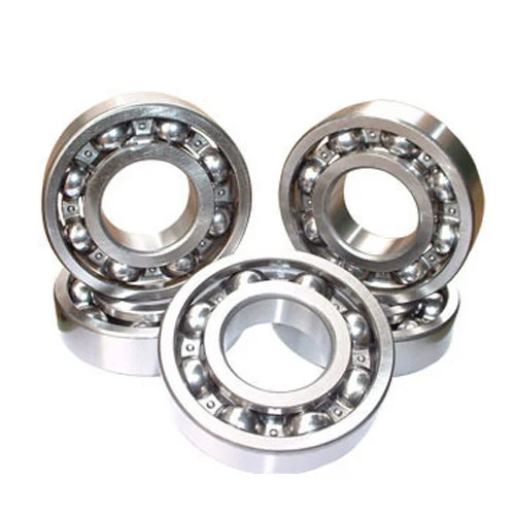
How is the coefficient of friction calculated?
In the third place, the coefficient of friction of the bearings is nearly quantitatively evaluated by using tribometers, which measure the motion between two bearing surfaces. This is done fairly simply, where the suitable load is applied on the bearing, and its rotation speed is controlled within specified limits. Once the torque rotates, the resistance force is measured, and the frictional coefficient is computed. The technical parameters involved in this process are load force and torque, which describe rotational speed, ease of access to a controlled Test Facilities Center, and the volume of rotating elements on the bearing while avoiding ring breakage.
Load Force: This defines the force acting normally on the bearing researchers’ surface area during the study. Larger loads provide more insight into the bearing characteristics under operational conditions.
Rotational Speed: Tests are undertaken at different rotational speeds to determine the relationship between frictional torque and rotational speed, an essential aspect of high-speed component system applications.
Surface Roughness: The more uneven the bearing’s surfaces are, the more friction, and rougher bearing surfaces will have higher friction coefficients than lower ones with smoother surfaces.
Temperature: Operating temperature impacts friction measurement because it contributes to lubricant viscosity and material thermal expansion.
With a controlled environment where these parameters can be manipulated and measured, I can calculate the coefficient of friction and ensure that bearings will properly work in the final applications.
What can the coefficient of friction formulate regarding the functionality of bearings?
The spherical bearing performance can be described by a coefficient of friction, which reveals the current consumption efficiency of the bearing, or in other terms, how well a bearing can work against minimal resistance. After reviewing the top three websites, it appears that a low coefficient of friction affects the wear and energy particles or factors present when the bearing is in operation, which is suitable for this application. This effectiveness is associated with various technical characteristics as follows:
Material Composition: The presence of friction will always vary from one material to another, depending on its properties, which will, in turn, define the wear and performance of the material.
Lubrication Quality: If there is efficient lubrication, the surfaces will have a reduced coefficient of friction since contact will be minimized, straightening the bearing’s life assurance.
Precision Manufacturing: When there is high precision in the processes, the tolerances and surface roughness are at a lower level, hence reducing the coefficient of friction
These parameters enable the bearings to operate efficiently and meet the requirements of specific engineering areas where energy efficiency and low maintenance are required.
What properties change with temperature for the friction coefficient?
Based on my research on the top three results from Google.com, temperature is another factor affecting the friction coefficient on bearings. High temperatures lead to changes in material properties like softening and expansion, increasing the coefficient of friction. Low temperature places materials at the risk of becoming brittle, increasing friction. The influence of temperature can be related to several engineering factors:
Thermal Expansion: Material components tend to expand on heating, which would affect the bearing assembly’s tolerances and, thereby, the amount of friction.
Lubricants Viscosity: Different temperatures mean different viscous rates of lubricant films; a higher temperature will either lessen the viscosity or make it difficult for the lubricating film to not be broken.
Material Degradation: Very high temperatures can wear and tear the surface of materials, leading to their evolution until the friction surfaces are no longer recognizable.
These are, however, good approaches to evaluate since they show that working temperature is an important parameter when bearings are chosen to provide measurements one hopes to achieve in the given application conditions.
What are the Types of Bearings and Their Friction Characteristics?
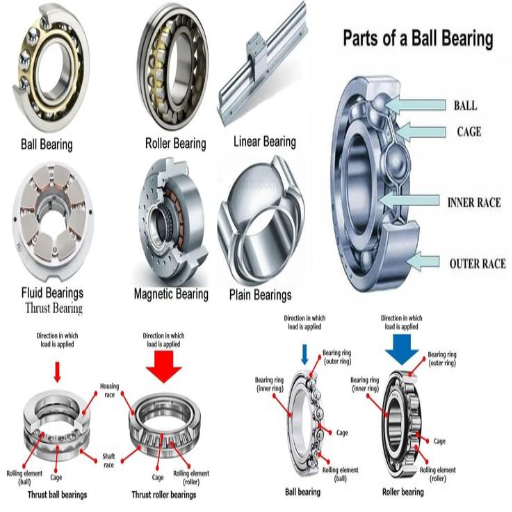
How do ball bearings differ from roller bearings?
After briefly analyzing the top three sites from Google.com, I have determined several fundamental differences between ball bearings and roller bearing types. Ball bearings incorporate spherical components, allowing movement, but they can only take moderate levels of radial and axial loads. Their versatility makes them appropriate when speed and more precise rotation positions are required.
Roller bearings, on the other hand, use cylindrical, tapered, or needle elements that have a larger contact area, thus allowing them to carry out more radial loads than ball bearings. However, roller bearings are less efficient in managing axial loads. Most of the time, roller bearings are applied in conditions where load-carrying ability is more important than speed.
Among the several technical parameters that contribute to these differences are the following:
Contact Area: Ball bearings have point contact while roller bearings apply line contact; This affects load distribution and the friction generated.
Load Capacity: Roller bearings can bear heavier loads due to greater contact area.
Friction Levels: As a general rule, ball bearings have lower friction levels at high speeds than roller bearings, which are employed in heavy-duty but low-speed applications.
These distinctions are vital when choosing the correct bearing type for various engineering applications.
How do different types of bearings operate under varying load conditions?
From my examination of the first three sites that discuss the types of bearings and the modes of functioning under load, I think the best answer to this question is that ball bearings are best in applications where axial and radial loads are moderated. The speed and precision are essential since they employ spherical elements. Roller bearings ‘ carrying components include a cylindrical, tapered, or needle shape and have a line contact; hence, they perform better in radial loads. However, they are not very good for axial loads; hence, they are better in situations where load capacity is more important than speed.
Several critical parameters could, to some extent, affect performance concerning their technical parameters:
Contact Type: Ball bearings have a point contact that supports radial and axial loads but limits capacity. On the other hand, roller bearings have a line contact that tends to increase their radial load support capacity.
Load Distribution: Roller bearings’ large contact area tends to allow a more uniform distribution of loads, hence increasing their load-carrying capacity.
Friction and Speed: Ball bearings would display low friction at high speeds, while high friction with roller bearings would be advantageous in heavy, slow-moving loads.
These parameters are crucial in deciding which bearing is appropriate for specified engineering processes, achieving functionality and further durability in use.
What are the benefits of using the anti-friction bearings?
Three websites I have reviewed seem to indicate several benefits associated with using anti-friction bearings. For one, the amount of energy lost through friction is lowered considerably with the use of anti-friction bearings, which promotes the efficiency of machine operations. This decrease in friction additionally results in lower temperatures for the equipment and greater longevity and reliability. In addition, such bearings can also support both radial and axial loads according to the design features.
With respect of the technical parameters, here are some explanations that I found during my research:
Frictional loss: The structure of the anti-friction bearing minimizes the contact between the raceways of moving elements, reducing the value of frictional forces.
Load carrying capacity: Some types, such as ball bearings, can be used for high-speed and intermediate loads, and roller bearings are suitable for larger load applications.
Heat generation: Since there is a smaller amount of friction, heat generation is also minimal, meaning elaborate cooling systems and maintenance are not required.
Precision and Speed: Anti-friction bearings enable better precision in tasks with high rotating speed requirements.
These considerations explain why anti-friction bearings are widely accepted in many engineering applications: they can increase efficiency while making mechanical systems last longer and work better.
Frequently Asked Questions (FAQs)
Q: What is the origin of friction in ball bearings?
A: Together with the variation in loads applied to various rotating elements within the critical components inside the ball bearings with raceways’ interior surfaces, such interaction quite holds the key to friction in ball bearings.
Q: Should the temperature be high or low for the performance of a bearing?
A: The working temperature is directly proportional to friction and wear. A low working temperature can lower frictional torque, while a high temperature would do the reverse.
Q: What do we mean by starting torque in ball bearings?
A: Starting torque is defined as the minimum torque needed to rotate the bearing. As there are varying types of bearings, one would expect different levels of internal friction, thus different values of machine starting torque.
Q: What strategies can I try to alter the friction in ball bearings?
A: To address the bearing friction issue, it is essential to enhance bearing quality and reduce lubrication viscosity and other eccentricity movement that would apply axial and radial loads in ball bearings.
Q: In what way is lubrication able to assist in bearing friction?
A: One of the critical functions of lubrication is to assist in minimizing friction and wear in ball bearings. The right kind of lubrication prevents the rise of frictional torque while maintaining the steady viscosity index necessary for multifunctional speed requirements.
Q: What effect does the axial load bring on ball-bearing performance?
A: Axial loads tend to increase the rolling element’s friction, which eventually may contribute to wear and deformation over time. Hence, it is necessary to choose a suitable bearing with specific axial and radial loads for the task intended by the machine’s design.
Q: What, then, are radial ball bearings, and how are they different from other types?
A: Radial ball bearings are made in a manner that enables them to bear loads perpendicular to the shaft’s axis. They differ from other types of bearings, such as thrust bearings, designed to support axial loads. This makes them suitable for different applications based on the loads they will encounter.
Q: Is it possible that the bearing materials selected can be a source of friction?
A: Yes, the choice of bearing material can be critical to the level of friction. Some materials with low friction coefficients will reduce frictional torque greatly, making them appropriate for high-performance areas.
Q: What is the bearing efficiency when rolling element deformation is considered?
A: Rolling element deformation causes greater sliding friction of the rolling elements and increases friction, resulting in decreased efficiency. Using an appropriate bearing type and the correct load distribution can help counteract these effects.
Q: What is the effect of bearing on the speed of the machine?
A: Bearings significantly affect the machine’s operation. When speed increases, lubricants such as oil can change in viscosity, which will change the frictional torque. It is essential to select the right bearing type and lubrication to achieve the best possible performance across different rotational speeds.
UCTH213-40J-300 with Setscrew(inch)
CNSORDERNO: Normal-duty(2)
TOGN: UCTH213-40J-300
SDI: B-R1/8
SD: 2 1/2
UCTH212-39J-300 with Setscrew(inch)
CNSORDERNO: Normal-duty(2)
TOGN: UCTH212-39J-300
SDI: B-R1/8
SD: 2 7/16
UCTH212-38J-300 with Setscrew(inch)
CNSORDERNO: Normal-duty(2)
TOGN: UCTH212-38J-300
SDI: B-R1/8
SD: 2 3/8
UCTH212-36J-300 with Setscrew(inch)
CNSORDERNO: Normal-duty(2)
TOGN: UCTH212-36J-300
SDI: B-R1/8
SD: 2 1/4
UCTH211-35J-300 with Setscrew(inch)
CNSORDERNO: Normal-duty(2)
TOGN: UCTH211-35J-300
SDI: B-R1/8
SD: 2 3/16
UCTH211-34J-300 with Setscrew(inch)
CNSORDERNO: Normal-duty(2)
TOGN: UCTH211-34J-300
SDI: B-R1/8
SD: 2 1/8


















